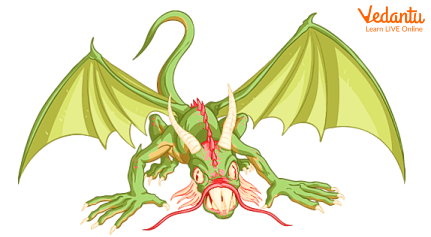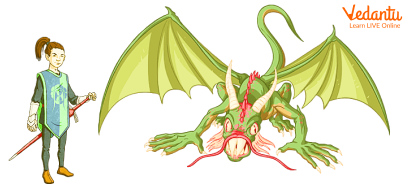A Nonsense Poem for Little Children – Jabberwocky
Have you read the novel ‘Alice’s Adventures in Wonderland’ or watched the movie Alice in Wonderland? Do you remember the Red Queen’s monster, Jabberwocky that was killed by Alice? Let us tell you there is an actual poem on Jabberwocky! And it’s by Lewis Carroll, the same person who wrote your favourite ‘Alice’s Adventures in Wonderland’. Do you want to read the poem on Jabberwocky? Then go ahead and enjoy the amazing piece!

Jabberwocky
About the Poem
The poem ‘Jabberwocky’ is perhaps one of the best-written nonsense poems in English literature. A nonsensical poem is usually a funny poem having made-up and meaningless words. It has unreal characters but a simple rhyme scheme. Although the poem’s first stanza was written by Carroll in 1855, the entire poem first appeared in 1871 in his novel ‘Through the Looking Glass’, which is a sequel to his earlier novel ‘Alice’s Adventures in Wonderland’. The poem deals with themes of courage, love, and the triumph of good over evil, as the young boy musters courage and bravely slays Jabberwocky.
Now, let’s read the poem together!

The boy and Jabberwocky
Jabberwocky (The Poem)
‘Twas brillig, and the slithy toves
Did gyre and gimble in the wabe:
All mimsy were the borogoves,
And the mome raths outgrabe.
‘Beware the Jabberwock, my son!
The jaws that bite, the claws that catch!
Beware the Jubjub bird, and shun
The frumious Bandersnatch!’
He took his vorpal sword in hand:
Long time the manxome foe he sought—
So rested he by the Tumtum tree,
And stood awhile in thought.
And, as in uffish thought he stood,
The Jabberwock, with eyes of flame,
Came whiffling through the tulgey wood,
And burbled as it came!
One, two! One, two! And through and through
The vorpal blade went snicker-snack!
He left it dead, and with its head
He went galumphing back.
‘And hast thou slain the Jabberwock?
Come to my arms, my beamish boy!
O frabjous day! Callooh! Callay!’
He chortled in his joy.
‘Twas brillig, and the slithy toves
Did gyre and gimble in the wabe:
All mimsy were the borogoves,
And the mome raths outgrabe.
Summary
The poem follows the literary form of ballads, where a story is narrated in the form of a poem or epic. Carrol’s poem commences with a father warning his son about a strange and dangerous creature living in the dense woods, Jabberwocky. He cautions him against Jabberwocky’s sharp claws and teeth and other strange creatures, such as the Jubjub Bird and the Bandersnatch. Thus begins the heroic quest of the young boy. He takes his Vorpal sword and searches for the creatures. He takes rests for some time near the Tumtum tree and then resumes his hunt for them. Finally, he discovers Jabberwocky, bravely fights him and slays him. The boy returns to his father with Jabberwocky’s head and the overjoyed father celebrates his victory on Frabjous Day.
About the Poet
Charles Lutwidge Dodgson, famously known by his pen name Lewis Carroll (27 January 1832 – 14 January 1898), is credited for being one of the great purveyors of the genre of ‘literary nonsense’ through his works. He was not only renowned for his children’s fiction but was a distinguished mathematician at Christ Church, Oxford. Interestingly, his pen name is a reverse of his original name, Charles (C) Lutwidge (L) changed to Lewis (L) Carroll (C).
Some of his notable works include Alice’s Adventures in Wonderland (1865), Through the Looking-Glass (1871), Jabberwocky, The Hunting of the Snark (1876), The Walrus and the Carpenter, Sylvie and Bruno (1889). A few of his remarkable mathematical pieces include An Elementary Treatise on Determinants (1867), Euclid and His Modern Rivals (1879), and Curiosa Mathematica (1888).


FAQs on Jabberwocky - A Poem for Kids by Lewis Carroll
1. What is Jabberwocky?
Jabberwocky is a fictional character. It is a ferocious monster with eyes of flame that appears in the poem Jabberwocky by Lewis Carroll. The poem is present in the first chapter of the novel, Through the Looking Glass by Carroll. In the poem, the father warns his son against the dangerous Jabberwocky.
2. How does the son kill Jabberwocky?
Despite his father’s warnings, the young boy courageously sets out to hunt the monster Jabberwocky. He uses his sharp Vorpal sword to kill the creature and brings his head to his father. They celebrate the boy’s bravery and victory on Frabjous Day.





